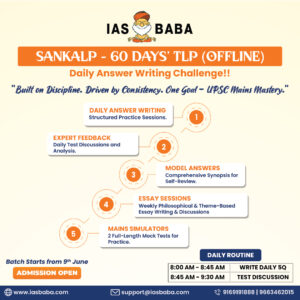Ethics Theory, TLP-UPSC Mains Answer Writing
Q. 12. In light of ongoing disputes over religious sites, critically analyze the significance and limitations of the Places of Worship (Special Provisions) Act, 1991. (250 words, 15 marks)
Introduction
The Places of Worship (Special Provisions) Act, 1991 was enacted to preserve the religious character of places of worship as on August 15, 1947, with the sole exception of the Ayodhya dispute. It aimed to protect India’s secular fabric and prevent the politicization of history.
Body
Significance of the Act:
- Constitutional safeguard: In the 2019 Ayodhya verdict, the Supreme Court called the Act “a legislative instrument to protect secularism,” affirming Parliament’s intent to end retroactive communal claims.
- Preventive mechanism: By freezing the status quo, it blocks fresh litigation over historical wrongs, ensuring communal harmony.
- Judicial restraint: Reinforces the idea that courts must not be used to settle theological or historical disputes, preserving public order.
- Symbolic value: Affirms the principle that past injustice cannot be a ground for present-day disruption—a key secular commitment.
- Broad coverage: Applies to temples, mosques, churches, and gurudwaras across India. → However, the Act now faces its greatest legal and political challenges since its inception.
Limitations and Emerging Challenges:
- Post-Ayodhya precedent: As Frontline (2024) notes, Ayodhya’s exception is now a template for fresh claims at Gyanvapi, Mathura, and even Ajmer Sharif.
- Judicial ambiguity: In the Gyanvapi case, the Supreme Court allowed surveys, interpreting them as “ascertainment of religious character”—blurring the Act’s boundaries. • Pending constitutional challenge: Petitions in the Supreme Court claim the Act violates Article 25 (religious freedom) and Article 32 (judicial remedies).
- Lower court activism: Civil courts continue to entertain suits despite the Act’s bar, often under pressure from majoritarian mobilisation.
- Enforcement deficit: No statutory body exists to monitor compliance with the law, making it vulnerable to political misuse.
Conclusion
While the 1991 Act is key to protecting India’s secular democracy, its strength now depends on clear court rulings, political agreement, and public calm. Without these, it risks being weakened by biased reinterpretation and divisive lawsuits.













